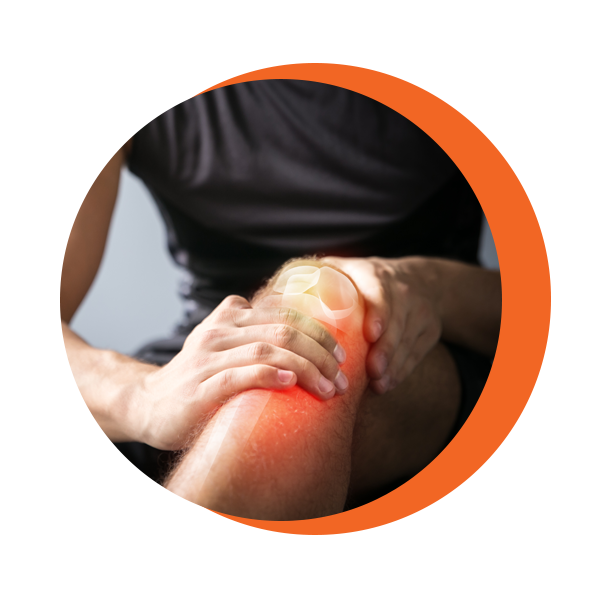Knee pain when bending, jumping, walking or even sitting is more common than you think – especially in athletes or otherwise active individuals. The knee is one of the most complex joints in the body and therefore, one of the most susceptible areas to injury. The knee serves a myriad of functions, such as:
Knee pain can be caused by an acute injury, repetitive use, or an underlying condition.


The knee serves to connect the femur in your thigh to the tibia in your shin. Other bones in the knee are the fibula, which is a small bone that runs alongside the tibia and the patella, also called the kneecap.
Along with bones, the knee has numerous muscles, tendons and ligaments. Some prominent ligaments that provide stability to the knee and are vulnerable to injury include:
The meniscus is found twice in both knees and is a small piece of cartilage that acts as a shock absorber. The meniscus serves to protect the articular cartilage and helps to distribute weight evenly across the knee. Meniscus tears are common, especially among athletes who play sports with twisting, turning, or pivoting motions and older adults whose tendons have weakened over time.
Meniscus tears have different treatment options, depending on
Surgery may remove or repair the torn meniscus, but fortunately, not every meniscus injury needs surgery. Before recommending surgery, your physical therapist may suggest rehabilitative exercises, anti-inflammatory injections, or rest.
The anterior cruciate ligament, known as the ACL, is a small band that crosses from the back part of the femur to the front part of the tibia bone. The ACL works with the PCL and the MCL to stabilize the knee by limiting rotational and forward movement of the tibia.
Tears of the ACL are fairly common in athletes who play sports that involve turning, cutting and pivoting motions. ACL tears can be very severe and they usually require a reconstruction surgery. There are three different kinds of ACL reconstructions:
Following an ACL reconstruction, your recovery will include pain management, wound care, a form of walking assistance and an emphasis on rehabilitation. Completing rehabilitation exercises prescribed by a certified physical therapist will be essential to your recovery process. Rehabilitation serves to restore mobility and strength to your knee. For athletes, rehabilitation allows you to gradually return to competitive play.
Patellar tendinitis is a common injury that causes irritation and inflammation in the tendon that connects your patella to your shinbone. This tendon allows you to kick, run and jump, meaning athletes who jump frequently in their sport are very likely to develop this condition.
Although primarily caused by repetitive stress, some other contributing factors include:
Fortunately, physical therapy may reduce many of the symptoms associated with knee pain. Whether you are an elite athlete or a weekend warrior, our certified doctors of physical therapy are ready to help you regain mobility and live pain-free.
Fill out the form below and we will get back to you shortly on scheduling your appointment date!

CONTACT:
833-4 WE HEAL (833-493-4325)
Fax: 833-918-2233
info@reenvisionpt.com
WORKING HOURS:
Monday – Friday
8:00AM – 5:00PM
Please note that the link will come from Phreesia, one of our partner companies.